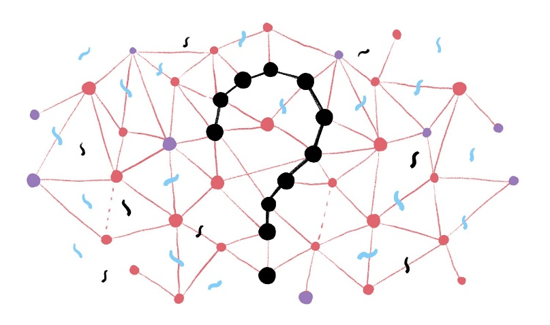Webcam communication is the business development leveller!
Nobody can quantify with certainty the exact impact the pandemic will have regarding working with clients. With regards to potential post pandemic behaviour, there appears to be little evidence from buyers to undertake face-to-face meetings with new vendors.
As a business development specialist or as described in-house as the rainmaker, I was brought up on a concept referred to as the 20% rule.
Not that many people will take the risk of trading a stable and proven professional relationship for a 10% discount. Generally, it needs a larger discount to create the environment where most people will be prepared to have the conversation to explore what a new vendor has to offer.
In my field at that time of Banking we would not be able to offer such financial inducements. However, the client or prospect would have some type of expectation of what customer service and front-line interaction a Bank should be able to offer them.

We had to exceed this benchmark by 10% in terms of our skill and knowledge in the expectation that the incumbent Bank would be taking the relationship for granted and be 10% below this benchmark. This would create in the mind of the prospect a 20% gap which would be enough for us to disturb them into becoming our client.

So, taking this concept further we explored the following as we created an on-line questionnaire that searched projected buying’ habits in 2021.
(We thank Barclays Eagle-Lab Tech incubator C4DI for their assistance).
We had 312 respondents.
These were not specifically buyers of legal services and they also represented businesses with an annual turnover of more than £1 million in 2018.
67% of those respondents could not envisage a face-to-face meeting with a brand-new vendor in 2021 based on their COVID-19 opinion up to August 7th 2020.
This insight is from a busy and presumably stressed out business community. The data is also not exhaustive and is a sample of questioning for a larger project around buying services we will be researching in November. However, thinking that the method for buying and selling services will reboot back to the same method prior to the pandemic may not holdup to much scrutiny. So, that response is just a small snapshot of opinion.
What is not a snapshot of opinion is the following. The researcher Dr Phillipa Lally reviewed the concept of habit creation. She published these findings. (This was published by https://www.ucl.ac.uk recognised globally for its research strength).
https://www.ucl.ac.uk/news/2009/aug/how-long-does-it-take-form-habit
Her research on the creation of habits demonstrated, through a series of tests, that on average sixty-six days was the period required for the creation of a new one. Creation of a new habit was specifically engaging with a new behaviour and calculating the tipping point of where that new behaviour became automatic.

Using that measurement, it is reasonable to suggest that a new communication habit has formed. This new communication habit does not work at all well with offers of service. Service selection is rooted in the concept that ‘people buy people’ and it is hard to do that through the prism of a laptop screen. The webcam is now the filter of your offer and professional use of the webcam is not just about how to employ the technology.
In its most simple form, many professionals see this essentially as a conference call with a head shot.
According to best practice from South Africa, Hong Kong and Australia there is a matrix of skills and proficiency around webcam use. The great news is that it is something that can be learnt and developed.
In fact, for those of us that may lack the charisma and projection in a face-to-face meeting, that so many experienced and successful rainmakers possess, this current situation is actually a leveller.

One of my longest associations is with a financial services professional who has been involved in business development slightly longer than thirty years. He is an exceptional rainmaker in the field of wealth management services. He is over 6 feet in height, he has more than a passing resemblance to George Lazenby, who played the role of James Bond, and possesses a Welsh accent that leans towards Richard Burton.

In a first meeting, in the first thirty seconds, this is a potent starting point for generating confidence in him. When you add to that, two minutes into a first meeting, in a boardroom environment, he is exceptionally skilled at communicating the value of complex wealth management products to a multiple person audience…if you are competing with him…you have some very hard yards in front of you to win the account.
In this current environment, the immediate first impressions that he delivered previously are now taken from him by the powers of the webcam. The webcam is almost Kryptonite to his communication ability and much of his rainmaking strength is diminished.
(Even I look as imposing as he does through a webcam).

Our starting point is that it is hard to build rapport via the webcam. Without rapport you have another barrier to overcome which is to communicate effectively with the other person. It requires very specific preparation to remove what barriers you can through the on-line environment. The great news is that according to best practice from South Africa, Hong Kong and Australia there is a format to developing this of which Wilkinson Reads will share the basics.
Our next blog: Rapport building through the webcam: ignore this at your peril!










